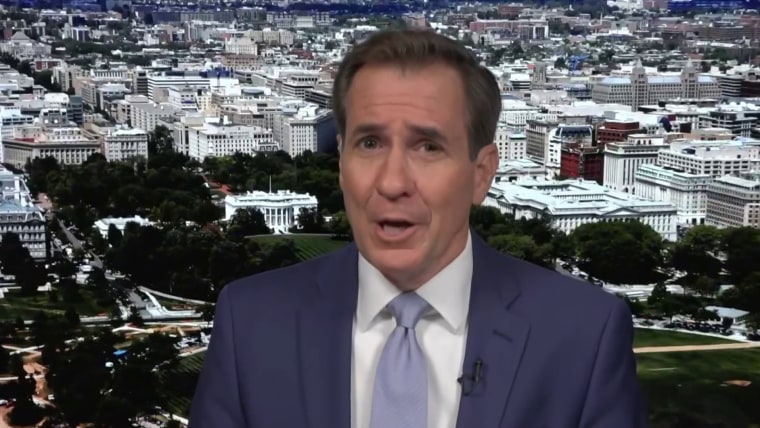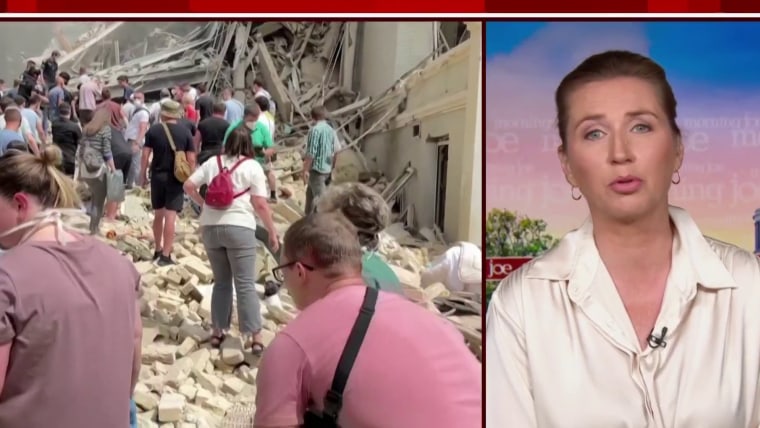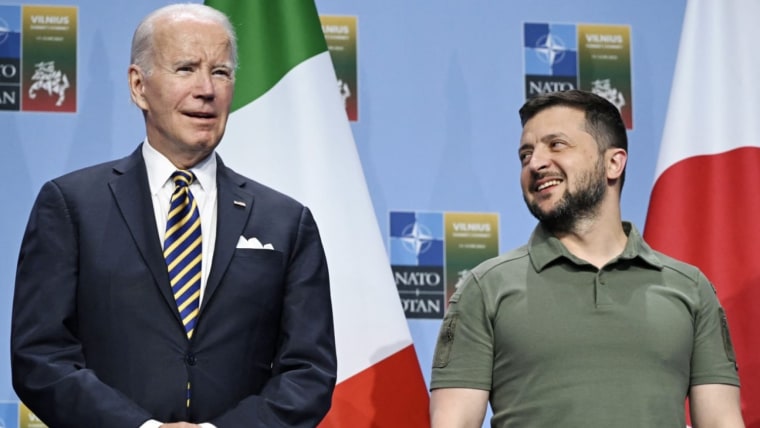On the eve of NATO’s Washington summit, which runs Tuesday to Thursday and marks the alliance’s 75th anniversary, American foreign policy mavens identified with the realist school of thought signed an open letter warning against steps that would move Ukraine closer to NATO membership. First published in Politico and later in the U.K.’s Guardian, the letter makes a case against such steps on two grounds.
Were Russia to attack a Ukraine allied with NATO, the U.S.-led military pact would be at war with Russia.
The first is that it would increase the risks of war with Russia. Article V of the alliance’s April 4, 1949, founding treaty provides — albeit with some wiggle room — for the collective defense of member states that come under attack. Were Russia to attack a Ukraine allied with NATO, the U.S.-led military pact would be at war with Russia. The letter writers’ second argument against bringing Ukraine into NATO is that no important American national security interest warrants running this risk.
The letter’s signatories might have spared themselves the effort of writing. Even though NATO membership is something President Volodymyr Zelenskyy’s government has pushed for and, according to a recent poll, 77% of Ukrainians desire, there’s no chance NATO will take concrete steps that solidify Ukraine’s prospects for membership. To understand why NATO won’t oblige Ukraine, we need to look back and look forward.
At NATO’s 2008 summit in Budapest, Hungary, President George W. Bush goaded a divided NATO to agree in principle to admit Ukraine. Such is the influence of the U.S. within the alliance: Without America’s military might, Article V would be meaningless. But even though Bush prevailed, so, in a sense, did the countries leery about admitting Ukraine. The part of that summit’s closing statement that pertained to Ukraine was noncommittal. It averred that NATO looked forward to welcoming Ukraine into its ranks but made no promises and didn’t provide a timeline.

Because of divisions in NATO, Kyiv was consigned to the alliance’s waiting room for 14 years, at which point Russia invaded. It didn’t even receive the Membership Action Plan promised in the Budapest statement. While the possibility of Ukraine’s membership increased tensions between Kyiv and Moscow, when Putin ordered his army to march on Kyiv in 2022, Ukraine was left naked.
The disunity within NATO over Ukraine’s membership has become even deeper. Poland, Estonia, Latvia and Lithuania are avid supporters, but elsewhere the mood ranges from reluctance to the outright opposition evident in Hungary and Slovakia.
Worse, the success of far-right parties in the latest elections to the European Parliament (23 of 32 NATO countries also belong to the European Union) and their stronger presence in countries such as France, the Netherlands, Germany and even Sweden bode ill for Ukraine’s chances.
The success of far-right parties in the latest elections to the European Parliament and their stronger presence in countries such as France, the Netherlands, Germany and even Sweden bode ill for Ukraine’s chances.
Now, one might point out that more NATO countries support Ukraine’s admission than oppose it. That would be a good point if decisions on enlarging NATO were reached by a majority vote.
But that’s not how it works. According to Article 10 of the founding treaty, “The Parties may, by unanimous agreement, invite any other European State in a position to further the principles of this Treaty and to contribute to the security of the North Atlantic area to accede to this Treaty.” This formulation gives any member nation a veto.
Ukraine’s problems don’t end there. The U.S. has been unwilling to throw its weight behind Ukraine. In a May 28 interview with Time, President Joe Biden highlighted Russia’s threat to Ukraine and Europe more generally. But he had this to say when queried about “the endgame” for Ukraine: “Peace looks like making sure Russia never, never, never, never occupies Ukraine. That’s what peace looks like. And it doesn’t mean ... they are part of NATO, it means we have a relationship with them like we do with other countries, where we supply weapons so they can defend themselves in the future. ... I am not prepared to support the NATOization of Ukraine.”

In Kyiv’s corridors of power, the realities that block Ukraine’s entry into NATO are well understood, even as they evoke frustration and disappointment.
Much of what will happen at the summit that started Tuesday is entirely predictable: NATO will tout its past successes, the democratic values that bind it, the doubling of its membership from 16 at the peak of the Cold War to its current 32, its members’ increased defense spending and its support for Ukraine’s resistance to Russia.
What’s equally foreseeable is that NATO won’t take any decision that definitively brings Ukraine closer to membership. NATO’s statement could reportedly include strong new language that aligns with or explicitly echoes NATO Secretary-General Jens Stoltenberg’s statement in April declaring Ukraine’s path to membership “irreversible.” That would mean Ukraine could become a member at some future, unknown, date. If that happens, Kyiv is likely to be pleased about the language. It would mean that Russia can’t count on a political settlement to its war with Ukraine that depends on Ukraine being kept out of NATO.
But even a statement signaling that Ukraine’s path to membership is irreversible still wouldn’t set aside the requirement for unanimity within NATO for admitting new members. That’s not present now, and when it will be remains uncertain.
